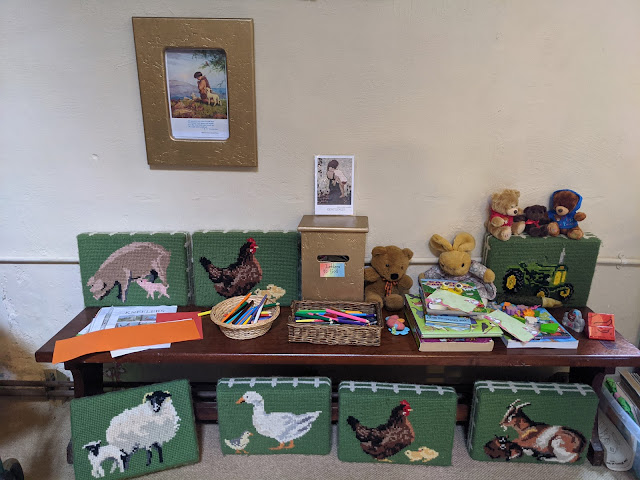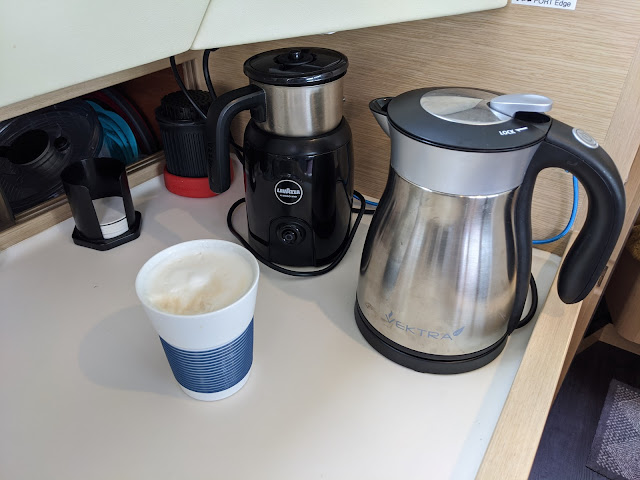Idril is currently alongside the east pontoon at Mylor Yacht Harbor in Cornwall, U.K. Tomorrow morning the folks from Triskel Marine will come aboard to start installing our new "Integrel" electrical system. We arrived a week ago, and have been busy preparing the boat for the Integrel and learning how to live aboard. We've also been recovering from the trip over from France and spending more time resting than usual.
Our trip here was our first outing without guidance from Kevin Bray, the
Swiftsure Yachts representative in France, and the "handover agent" in Cherbourg. Kevin did an outstanding job helping us find and resolve the inevitable new boat glitches, and did a great job teaching us to handle the boat. But now it was time for us to leave familiar Cherbourg behind and start sailing.
We left Cherbourg about 10 days ago, on a typical (for Normandie) partly cloudy Friday afternoon. We left the
Cherbourg Rade and sailed west, passing the northwestern tip of the Cherbourg peninsula, and then turned south to sail though the Alderney Race.


We timed our arrival at the Race for close to slack tide, but it was still pretty exciting. The sea floor under the Race is full of underwater mountains, so there are dramatic upwellings, strong currents and many
overfalls. Occasionally the boat would just slide sideways, and keeping a heading was a challenge.
At the southern end of the Race we turned northwest and headed for the English Channel. The wind was unfortunately against us, and with the increasing wave heights as we left sheltered waters, we were soon both seasick. Scopolamine patches helped, but neither of us felt really 100% until we reached calmer waters near Plymouth on Saturday afternoon.
We had planned to make a nighttime crossing of the shipping lanes, but we still don't have an
AIS transmitter, and our receive-only AIS showed us some very crowded waters. With neither of us feeling great, we decided to turn back to the southwest and attempt the crossing during daylight hours, which we did on Saturday morning.
Once past the shipping lanes we decided to make for Plymouth, rather than press on to Falmouth. There was no chance that we'd arrive at Falmouth before dark, and we both needed some rest. So, Plymouth it was. We spent the night at
Mayflower Marina.
After a good nights sleep we set out for Falmouth around midmorning.
We were still fighting our way upwind, and finally we arrived at Mylor Yacht Harbor at dusk on Sunday evening. The entrance to the harbor is guarded by a huge mooring field, and finding our way in to the dock was tricky. We had to "parallel park" the boat (as we had at Plymouth) between a set of pontoons, with boats in every slip on either side. The bow thruster was a big help, and we were lucky to have very light winds as we arrived.
The next morning we moved from our temporary spot on the dock to a nice, wide slip, where we stayed for the next 5 days.
On Monday morning we confronted our first boat problem since leaving Cherbourg: our fresh water pump failed. Luckily we could still get fresh water at the galley sink with the foot pump, but only cold water. On Tuesday morning we took the pump out and replaced it with our spare (boy, are we happy we had THAT spare!).
It was easier than we anticipated, and I was pleased that we were able to handle our first post-delivery mechanical failure on our own.
On Tuesday evening we had a visit from Triskel Marine, in preparation for the installation of our fancy electrical system. Its major pieces are:
- four 5KWh lithium batteries
- a high-output DC generator, mounted on our Volvo Penta D2-75F propulsion engine
- a kilowatt of solar panels on our stern arch (already there, but not hooked up)
- a 5KW DC to AC inverter, which takes power from the batteries and produces the 220VAC power needed by our watermaker and kitchen appliances (an induction stove, microwave/convection oven, hot water kettle and the all important milk frother...)
We're very eager to have this system installed, because without it, we're not able to anchor out or take moorings, making us dependent on slips and shore power.
The batteries were dropped off on Friday afternoon, and we stowed them temporarily in our aft cabin.
The plan is to install two on each side of boat, beneath the floor plates on either side of the companionway. To make this work on the port side, we had to move some water filters inboard to clear out some space. We did that this morning. This was another confidence builder; neither of us had worked with the 15mm PEX tubing and associated fittings before this. It turns out that this kind of plumbing is
very easy. Thank you,
John Guest Company, for making some very easy-to-use fittings!
So - what's it like to be living aboard? For starters, everything takes a little longer than you might expect. Everything on the boat has to be stored such that it won't just go flying every time the boat heels from side to side, or bounces up and down on the waves. This means that all of our kitchen gear -- pots and pans, utensils, dishes, and of course food -- has to be stowed with little room to move around, making it tricky to get out.
Here's a view of our galley, looking from front to back. Notice the cabinets at the back of the counter.
Here's what the contents are like, up close.
To get the large dinner plates out I have to first pull out the smaller plates on top of them; there just isn't enough height to get my hand in there with both sets of plates at the same time.
A lot of our storage is also beneath floor panels, so to get at it, you have to lift a floor panel, get what you need, and replace the panel.
It's not really hard, and you get used to it quickly, but it does slow things down.
Some truly critical pieces of equipment, however, remain at our fingertips.
It's also important to keep the boat tidy - "A place for everything, and everything in its place." It's just not OK to let dishes pile up in the sink; they have to be washed immediately, dried, and put away. Our galley sink is smaller than most terrestrial kitchen sinks, so we typically do dishes as we cook. Meal prep is an all-hands affair (especially since there are only the two of us aboard). But we'd kind of gotten accustomed to that while in Cherbourg; typically Katy does the actual cooking, and I wash and chop vegetables, make a salad and dressing, and do the intermediate clean-up.
All of this is becoming second nature, and since we don't generally have any place we have to be at any particular time, it doesn't seem onerous.
We are currently tending to sleep until fairly late in the morning (8 or 9) and, being so far north, don't go to bed until 11 or midnight, since it stays light quite late.
I'm spending a lot of time just crawling all over the boat, figuring out how things are put together and making a lot of notes. I'm working on creating a "boat owners manual" with lots of pictures and detailed instructions on how to operate the boat; the manual we got from Garcia was surprisingly generic. I also try to get out for bike rides at least 3 days a week. My rides sometimes bear delicious fruit.
All of this is about to be disrupted, though. Starting tomorrow morning, Triskel will start installing the Integrel, and we'll be off the boat and back in an Airbnb for 5 days. I'm looking forward to having the boat well and truly finished, so we can really settle in and make Idril our home.































































